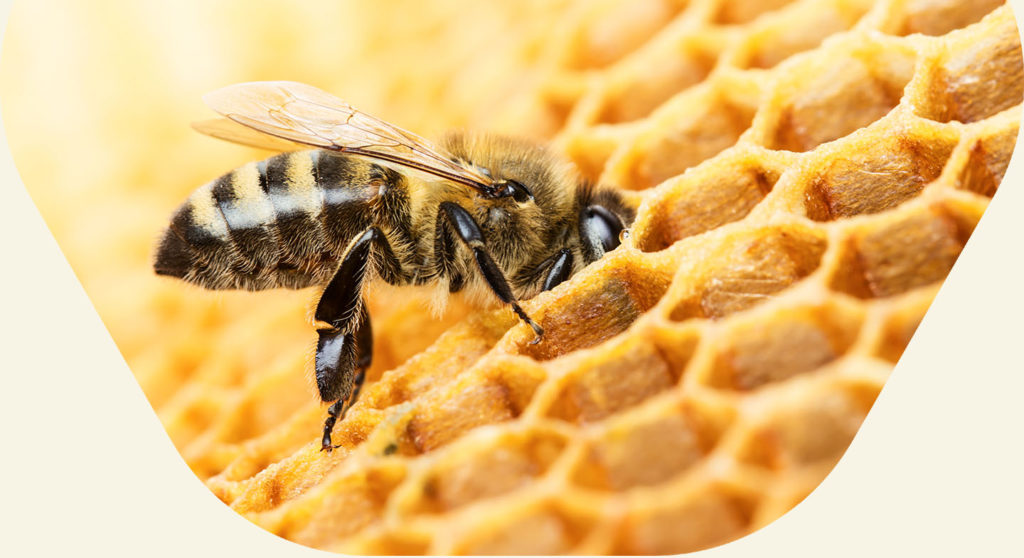Ivy, a significant source of food
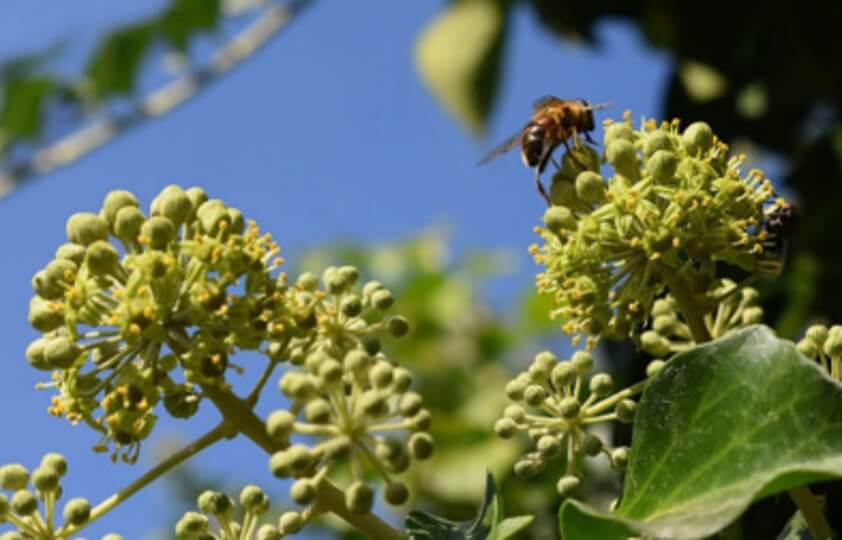
In autumn, a natural food source not to be neglected for our bees is ivy! It grows easily on trees such as oak and sometimes even covers houses. Climbing and robust, its flowering falls at the right time. From September to November, flowers are rare in the gardens and even less so in the fields. Its flowering during this period therefore covers, for our bees, the need to stock up on nectar and pollen without affecting the winter stock too much. However, if your colony is weak and light to carry, ivy will not be enough to feed it. It will be necessary to go through beekeeping food intake.
In the case of a healthy colony, ivy pollen will revitalize the queen’s egg-laying, and provide for the new generations of bees that will have to last nearly 120 days of life.
Know how to take precautions when opening hives
If the outside temperatures are too low, below 10 to 12°C, most bee breeds do not leave the hive.
Therefore, they should not be opened if the temperature is below about 15°C for the comfort and safety of the colony. You risk cooling the brood very quickly, causing its death or even developing diseases (appearance of mould with humidity, etc.).
Below are the 5 main precautions to take when opening your hives.
Precaution N°1:
Always choose a beautiful sunny day with mild temperatures above 15°C, and ideally without wind. If the weather deteriorates with the approach of a storm, avoid opening the hive and postpone your intervention. If the conditions are not favorable, the bees are likely to be very aggressive during the visit.
Precaution N°2:
Handle your hives with reliable personal protective equipment (PPE2 standard). Make sure that your wetsuit, veil and gloves are not torn or holed. Did you know? Our sweating can cause aggression in bees. So especially in summer, choose a cotton jumpsuit, or even an airy model supported by a layer of several meshes to limit perspiration by letting air through. The same is true with the smell of perfumes that are too strong, which can generate this aggressiveness.
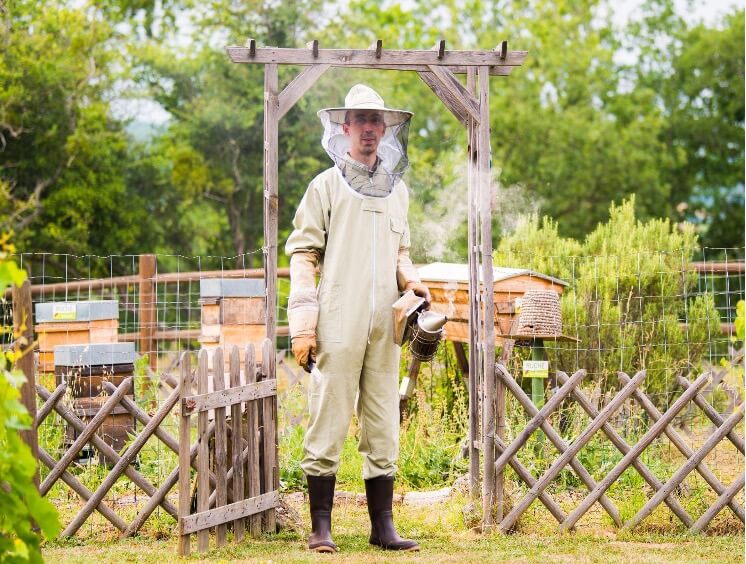
Precaution N°3:
The essential tool for any hive opening: the smoker. As I often say, don’t neglect its quality. The smoker is your only protective tool to deter bees from a “dummy fire”. Its smoke helps repel bees to keep control of the hive. But it still needs to be well lit! As long as your smoker has not set well, renew your lighting before leaving for the apiary. The smoker must not be switched off while working in the apiary. Different fuels can be used: dry grass, straw, pine needles, dry lavender… but not processed products such as textiles or other chemicals.
Precaution N°4:
Don’t leave empty-handed! “A beekeeper without his frame lifter is like a mechanic without his screwdriver”. This sentence will probably make you laugh and yet, many of the trainees I train think of opening the hives with just their fingers. No, it’s not possible! Propolis is omnipresent in the hive. Your frame lift will allow you to lift each item, starting with the frame cover or feeder, and then each individual frame to analyse what’s on it. You may need other tools such as pliers, a brush or a frame holder.
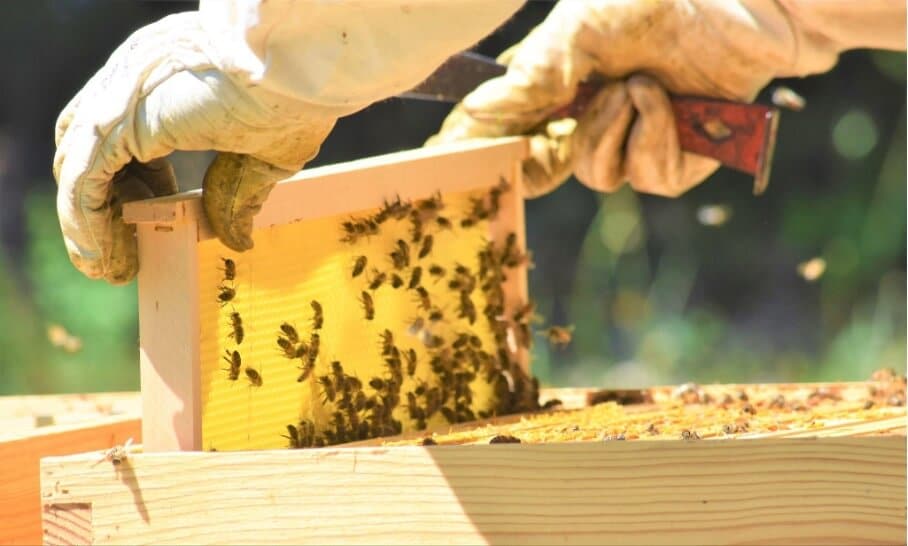
Precaution N°5:
When you take the combs out of the hive, don’t leave them outside for too long. Also be very careful not to drip honey, or the syrup base still present in the feeder. Any food could cause the hive to be plundered in certain seasons (i.e., an attack by a neighbouring colony on the hive you have opened). If you have things to remove from the hive, such as varroa strips, wax waste scraped off the frames, a bag of food, etc., take a bucket to throw them in on the apiary.
As usual, share your photos with us: we’ll post them on our website from the social networks with the hashtag: #apifonda #apiinvert!
See you next month on your API blog with your faithful partner, Les Ruchers De Mathieu!
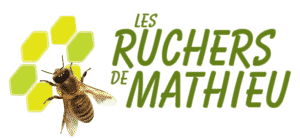
LES RUCHERS DE MATHIEU
Miellerie & Magasin d’Apiculture
Photos ©lesruchersdemathieu


